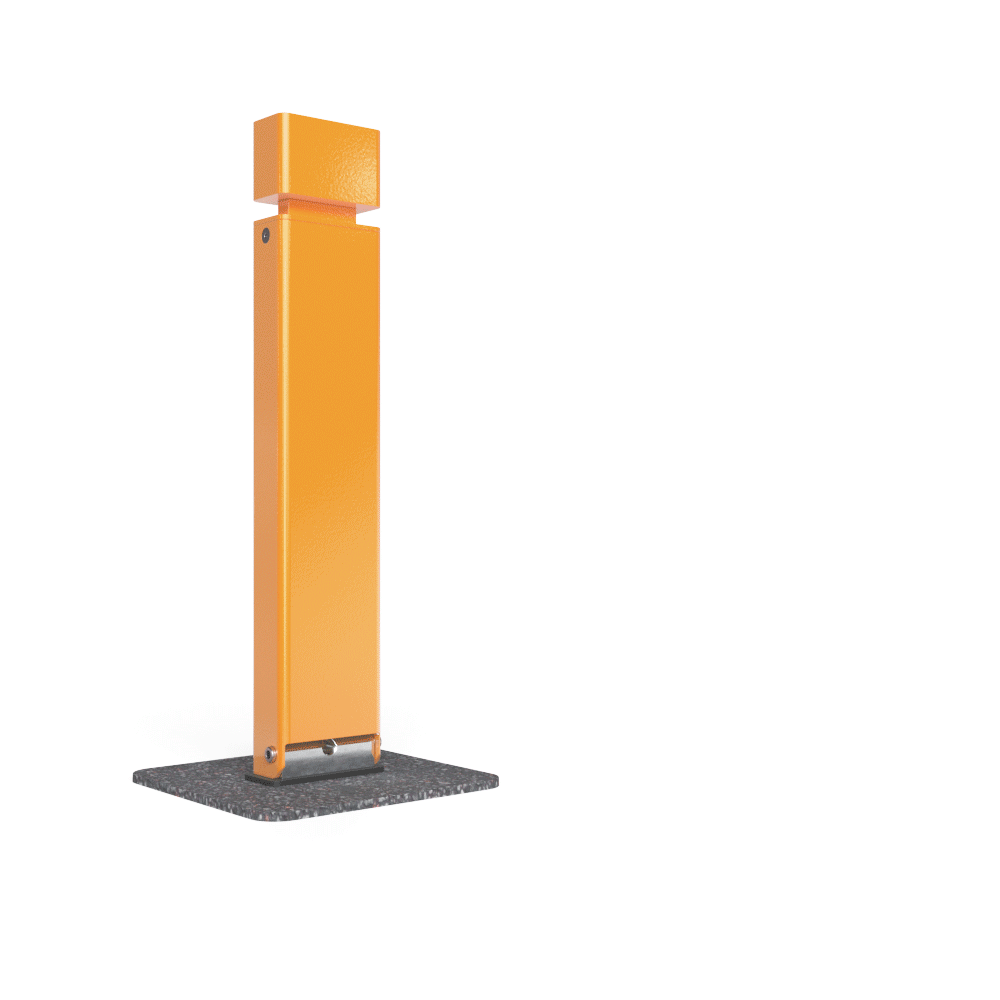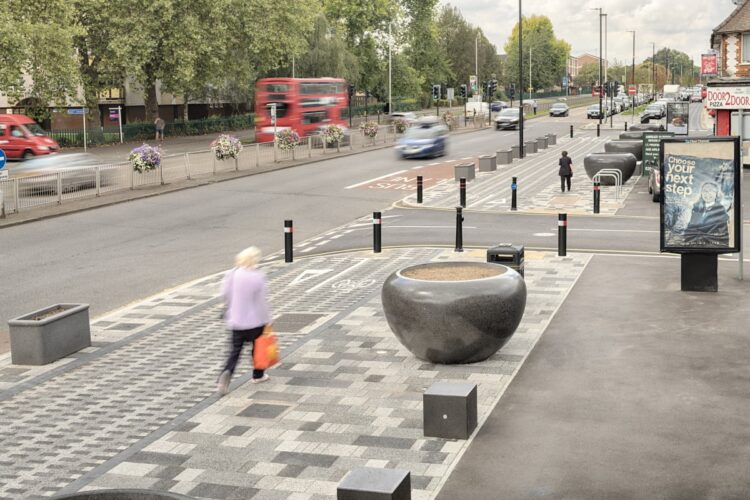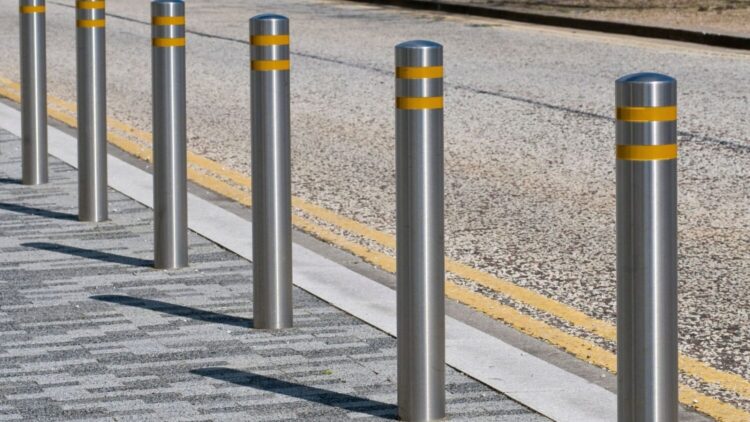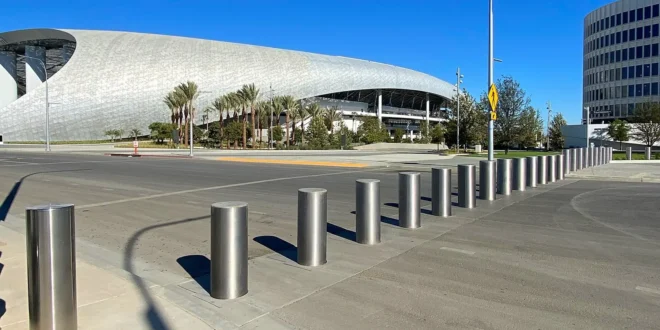In this age of urban planning and architectural growth, understanding the elements that help create a safe and functional environment determines the level of safety in a community. Two of these elements are bollards and barriers, which shape the functionality of cities across the globe.
Bollards, typically made of sturdy materials like steel or concrete, are short vertical posts that are installed primarily for controlling or directing road traffic, but also frequently serve as security features protecting pedestrians and buildings from vehicle intrusion.
Barriers, which come in many forms such as fences, walls, or gates, are intended to prevent or control access to specific areas. Both bollards and barriers are fundamental elements in the design of our urban and even rural landscapes, offering both functionality and aesthetic contributions.
This article addresses how they differ, and when is one more suitable to use than the other. Through an in-depth comparison, the hope is to enlighten readers about the differences and unique features of these structures, as well as aid in making informed decisions when they become relevant in your projects or plans.
Bollards

Bollards are short, sturdy vertical posts that are commonly installed in urban and suburban areas. Originally used for mooring large ships in harbors, bollards are now often employed to control road traffic, protect pedestrians and infrastructure, and enhance the aesthetic of public spaces.
History and Origins of Bollards
Bollards have a rich history that dates back to ancient Rome, where they were first used as hitching posts for animals and as boundary markers. Over the centuries, their use has evolved, from mooring ships in harbors to a significant shift during the Industrial Revolution when bollards were repurposed to manage traffic in growing cities and towns.
Different Types of Bollards
Fixed Bollards
As the name suggests, these bollards are permanently installed into the ground, providing a long-lasting and low-maintenance solution to traffic and security control.
Removable Bollards
These are designed for flexibility, as they can be easily removed and reinstalled as needed. They are commonly used in areas requiring adaptable access control.
Retractable or “Telescopic” Bollards
These bollards can be lowered into the ground when not needed, providing the highest degree of flexibility. They are often used in areas where the balance of security and accessibility changes frequently.
Barriers

Barriers are structures designed to prevent or control access to specific areas. They vary significantly in design, ranging from natural barriers such as rivers and mountains to man-made structures like fences, walls, and gates. Their main function is to protect, demarcate, or control movement.
History and Origins of Barriers
The use of barriers for defense, containment, or control dates back to prehistoric times, with early human communities using natural and man-made barriers to protect against predators or enemy tribes. As civilizations developed, the use of barriers has become more complex, now serving a variety of purposes in urban planning, security, and traffic control.
Different Types of Barriers
Temporary Barriers
These barriers are designed for short-term use or for situations where flexibility is required. They are commonly used in construction sites, event venues, or traffic control situations.
Permanent Barriers
Permanent barriers, like walls or fences, are constructed for long-term use and typically serve to demarcate boundaries or provide security.
Vehicle Barriers
Specifically designed to halt or control vehicular traffic, these barriers can be found in places like parking lots, checkpoints, and border crossings.
Bollards Vs. Barriers

Design and Construction
Bollards are typically sturdy, vertical posts installed individually or in a series, whereas barriers are often continuous structures like fences, walls, or gates. The design of bollards is generally more uniform, while barriers can vary considerably in terms of materials used, height, and overall structure.
Functionality and Use
Bollards are commonly used for traffic management, pedestrian safety, and protection of buildings or spaces from vehicle intrusion. Barriers, on the other hand, are often used to demarcate boundaries, restrict access to large areas, or provide a more substantial physical deterrent against intrusion.
Cost and Maintenance Requirements
The cost and maintenance of bollards and barriers depend largely on their type, materials, and complexity of installation. Fixed bollards and permanent barriers may require a higher initial investment but lower maintenance compared to their removable or temporary counterparts.
Additionally, more complex systems like retractable bollards or automated vehicle barriers may have higher ongoing maintenance needs due to their mechanical components.
Making the Right Choice
First, consider safety requirements. If you’re primarily concerned with directing traffic or protecting pedestrians from vehicles, bollards might be a more suitable choice. However, if you need to secure a larger area or restrict access, barriers could be more effective.
Second, consider aesthetics and public space design. Bollards can be more visually appealing and less obstructive, making them ideal for environments like parks or pedestrian plazas.
However, barriers can offer more privacy and a greater sense of security. Budget and long-term maintenance also play a role in the decision-making process. While some options may require a higher upfront investment, they might be more cost-effective in the long run due to lower maintenance needs.
Finally, don’t forget to consider legal and zoning requirements. Certain types of bollards and barriers may be subject to local laws or building codes, so it’s crucial to understand these regulations before making a decision.
Understanding the differences between bollards and barriers is critical for effective and aesthetically pleasing urban planning. Both offer unique benefits, and the choice between them should be determined by considering factors like safety requirements, aesthetics, budget, and legal stipulations.
By weighing these considerations, you can make an informed decision that best suits your project’s needs and creates a safe, functional, and attractive environment.
 Hi Boox Popular Magazine 2024
Hi Boox Popular Magazine 2024



